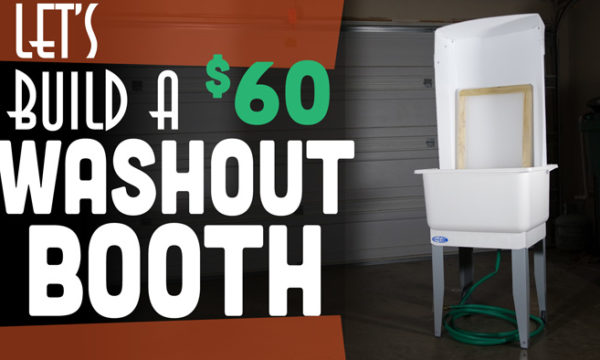
This post comes from a question David from the UK (yes we’ve gone international already) sent to me. He emailed me and said he was having problems with his emulsion and it was taking about 2-3 days for his coated screens to dry even in a drying box. If everything is done properly, it should only take an hour or two to get a dry screen, so if you are having similar problems check to see if any of these could be the culprit.
Humidity
When you’re coating your screens in emulsion you’ll want to make sure you’re doing it in a warm dry place. Personally I live in Houston, TX, where everyday feels like you’re laying in a hot bath with your clothes on. Oh also the traffic makes you want to swallow a knife but that’s not really relevant but had to be mentioned. Anyways, the humidity is the real killer and all that moisture in the air can cause some extra long screen drying times.
If you suspect this is the problem you can cover your drying rack with a blanket and put a dehumidifier at the bottom and suck out all that moisture. Or you can spend the extra money and pick up a screen drying cabinet/box like this one (affiliate link) that has a heating fan to get your screens dry even faster. But that won’t help all that much if you’re coating your screens too thick.
Your emulsion is too thick
Sometimes the problem can be user error and you might be coating your screens with an overly thick layer of emulsion. You want to make sure that you’re pressing firmly into the screen with your emulsion scoop coater so that emulsion isn’t just dribbling out and dripping down the screen. Pressing it firmly will also ensure you’re coating the screen consistently and not overusing emulsion in some spots, resulting in areas of your screen drying faster than others. If you hear a *zzziiiiiiiiiipppppp* sound as you run the scoop coater over the screen, you’re on the right track and are using the correct amount of pressure. On the other hand if you hear a *rrriiiiiippppp* sound it means you’ve hulked out and are probably smashing the scoop coater through the screen and the wall behind it. Don’t push it that hard Rambo.
The emulsion is missing something
I’ve seen this posted on a few forums, if your emulsion is taking days to dry instead of hours, then there’s probably something wrong with your emulsion and you should contact your supplier. More than likely you received a bad batch and your emulsion shipped to you without the proper photo sensitizer. It might be a known issue with that particular supply and you just need to give your supplier a call and threaten to break his legs if he doesn’t come up with a fix. Or you can politely find out if this is the case and they may be able to ship you whatever you need to remedy the problem.
So check out those factors to see if they are why you are getting less than satisfactory results with your emulsion. Let me know if you’ve looked into these solutions and you still couldn’t get your emulsion to dry properly.
[wp_ad_camp_1]




Comments (4)
September 21, 2015 at 6:48 pm
Depending on the type of printing you’re doing you may need a thick coat of emulsion. Is your emulsion A diazo base emulsion or a photopolymer? How much solids is in the emulsion, what is the viscosity? this all matters. But one point Casey makes is right on the money in that you may need a dehumidifier in your darkroom. If your emulsion is 40% solids that means it’s 60% water, If you have 70% humidity your screens won’t dry.
August 28, 2017 at 11:53 pm
I agree parrot, depending on the type of printing you’re doing. Very well explained.
Bruce, https://www.printavo.com
June 9, 2016 at 8:01 am
i have definitely put my emulsion on too thickly; is there a way i can fix this without having to start over?
June 16, 2016 at 5:24 pm
If you haven’t cured your emulsion yet, then you can still remove the extra to get a thin, even coat on your screen. If it’s already dry, then I think you will have to reclaim your screen with the emulsion remover and start over.